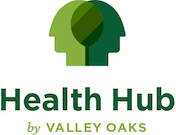Many of us have heard of attention deficit disorder (ADD) and attention deficit hyperactivity disorder (ADHD). However, ADD is no longer considered its own condition. Today, it’s classified under ADHD as the “inattentive” form of the condition while what we traditionally think of as ADHD is the “hyperactive” form.
According to the American Psychiatric Association around 8% of children and 3% of adults have some form of ADHD, so knowing the difference between inattentive and hyperactive is key to finding the right treatment.
Inattentive form
To be diagnosed with inattentive ADHD, a person must display six of the following symptoms frequently:
- Not paying close attention to details or making careless mistakes in tasks at school or work
- Forgetting daily tasks or having trouble remembering information
- Difficulty staying focused on tasks or activities
- Difficulty organizing tasks
- Not listening when spoken to
- Not following through on instructions
- Starting tasks but quickly losing focus or interest
- Being easily distracted
- Avoiding or disliking tasks that require sustained mental effort
- Losing things such as school papers, books, keys, wallet, cell phone, and eyeglasses
Hyperactive Form
People with hyperactive ADHD experience different symptoms. Similar to the inattentive form, a person must experience six of the following symptoms frequently:
- Fidgeting with items, tapping hands or feet, and squirming in their seat
- Difficulty staying seated for class or work
- Running about and climbing where and when it is inappropriate
- Difficulty playing or doing leisurely activities quietly
- Continually doing something and always being “on the go”
- Talking too much
- Blurting out responses before a question is fully asked
- Interrupting or intruding on others conversations and personal space
Getting help
If you believe you or your child may have ADHD, talk to your general practitioner or find a mental health expert. Both forms of ADHD are treatable, and the experts at Valley Oaks Health are ready to support you through counseling and resources.







